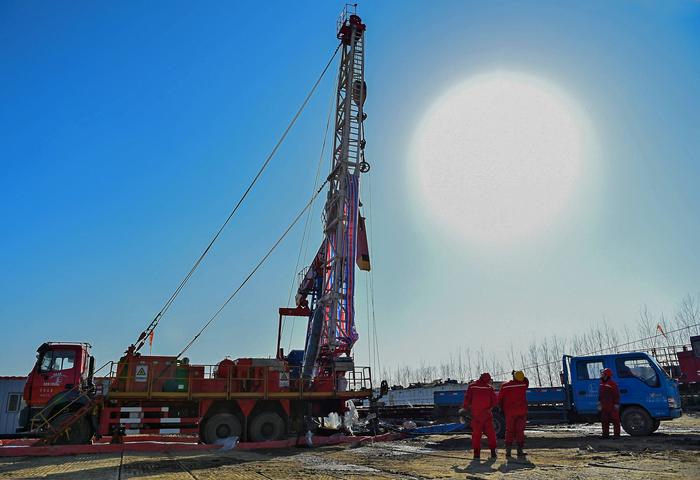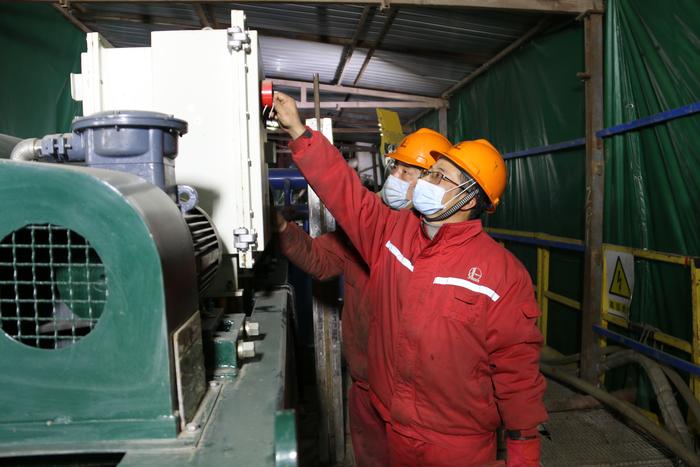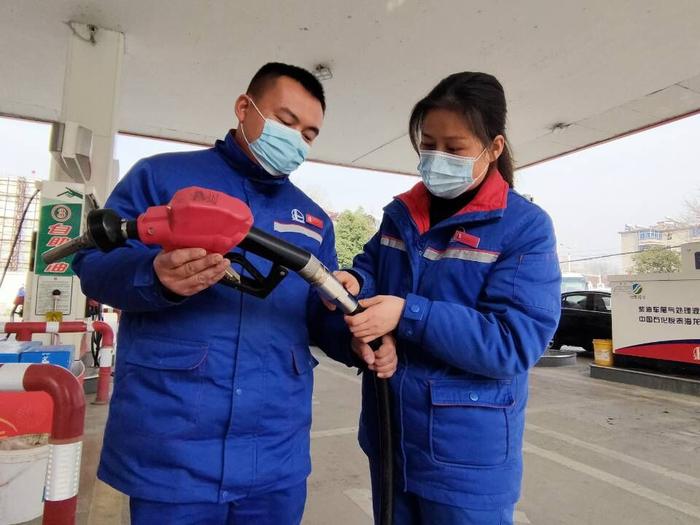|
| 2021-01-28 来源: 中国石化新闻网 |
| 石化新闻 |
中国石化新闻网讯 据路透社1月25日报道,没有什么可以避开眼下席卷BP的变革之风,就连一个多世纪以来通过发现数十亿桶石油为其利润提供动力的勘探团队也逃不过。 消息人士表示,该公司的地质学家、工程师和科学家已从几年前的峰值700多人削减到不足100人,这是首席执行官伯纳德 鲁尼(Bernard Looney)2020年发起的依托气候变化推动改革的一部分。 一是传统能源项目产能的缩减。 近几个月来已有数百人离开了石油勘探团队,他们要么被调去帮助开发新的低碳项目,要么被裁员。从莫斯科和休斯顿到英国石油公司(BP)伦敦附近的Sunbury研究总部的勘探团队时代已经结束,由前北海总裁阿里尔 弗洛雷斯(Ariel Flores)领导的BP勘探团队已被削减,其工作重点已缩小到在现有油气田附近寻找新资源,以抵消产量下降的影响,并将支出降至最低。这表明该公司正迅速从石油和天然气转向可再生能源。不过,至少在未来10年,石油和天然气仍将是该公司向可再生能源转型的主要资金来源。 BP的职工们强调了该公司在从化石燃料向碳中和过渡过程中面临的巨大挑战。通过降低BP的产量目标,向寻求低碳经济长期愿景的投资者表明了自己的意图,鲁尼无论是对内还是对外都清楚地表达了自己的意图,并成为第一位推动这一目标的石油巨头首席执行官。 二是油气勘探活动的削减。 在鲁尼的重组改革下,英国石油公司将削减约10000个工作岗位,约占员工总数的15%,这是包括荷兰皇家壳牌和道达尔在内的欧洲石油巨头中最激进的。 现年50岁的鲁尼是一名经验丰富的石油工程师,曾负责石油和天然气勘探与生产部门。他计划在未来10年将日产量削减100万桶,即40%,同时将可再生能源产量提高20倍。 但不可否认的是,尽管当前能源不断地在向可再生能源转型,但至少在2030年之前,石油和天然气仍将是BP的主要收入来源。 值得一提的是,鲁尼重振英国石油公司的努力并没有提振其股价,该公司股价在2020年末跌至25年来的最低水平,年内下跌44%,主要是因为人们怀疑该公司是否能够完成转型并实现其目标利润。有消息人士指出,大幅减少勘探的BP将导致公司规模变小。 挪威咨询公司Rystad Energy的数据显示,英国石油在2020年获得了约3000平方公里的新勘探许可,这是至少自2015年以来的最低水平,远低于壳牌获得的约1.1万平方公里的勘探许可,或道达尔获得的约1.7万平方公里的勘探许可。 消息人士表示,尽管2020年全球勘探活动因新冠肺炎疫情而放缓,但BP勘探活动的下降主要是其战略变化的结果。 要知道,几十年来,油气勘探一直是企业向大型跨国公司转型的先锋力量,为股东带来了巨额利润。在前首席执行官鲍勃 达德利(Bob Dudley)的领导下,为了应对2014年的油价暴跌,英国石油开始削减勘探支出,旨在利用技术来释放更多的油气储备。 而鲁尼将勘探预算推得更低,每年约为3.5亿至4亿美元。这大约是英国石油2019年勘探支出的一半,仅仅是2010年46亿美元勘探支出的一小部分。 2020年,英国石油公司在下调能源价格预期后,也从其石油和天然气资产的价值中抹去了200亿美元。在这些较低的价格假设下,英国石油认为其许多油气储备不值得开发。 三是加快可再生能源项目团队的建设。 这里给大家介绍一点小知识,英国石油公司成立于1908年,前身是盎格鲁-波斯石油公司(Anglo-Persian Oil Company),此后在伊拉克、阿塞拜疆、北海和墨西哥湾等地发现了大量的化石燃料资源。 此前,该公司试图实现能源多元化,加大向可再生能源领域进军的步伐,在风力发电场和太阳能技术上投资数十亿美元,但绝大多数投资都以失败告终。 不过,鲁尼相信,在政府对能源转型的空前支持下,在技术的不断进步下,他的计划将获得成功,可再生能源将变得易于获得。他已聘请麦肯锡(McKinsey)前高管朱利亚 基亚(Giulia Chierchia)监督英国石油公司战略的发展。 消息人士称,由休斯顿的柯斯蒂·麦科马克(Kirsty McCormack)领导的一个地质学家和数据处理团队,此前在勘探部门工作,现在将专注于研究和绘制岩石结构图的分析方法,寻找化石燃料,开发碳捕获、利用和储存(CCUS)和地热能等低碳技术。吸收重污染行业排放的二氧化碳,并将其注入枯竭的油田,被视为能源转型的关键,因为它有助于抵消排放。 BP许多高管都出现了岗位调动,费利佩·阿尔贝莱兹(Felipe Arbelaez)此前负责英国石油公司在拉丁美洲的油气业务,现在领导其可再生能源业务,路易丝·雅各布森·普拉特(Louise Jacobsen Plutt)是一位经验丰富的石油工程师,现在是CCUS的高级副总裁。 英国石油还从优步(Uber)、丰田(Toyota)和硅谷挖来员工,以增进其对电动汽车、电力市场、可再生能源的了解,并扩大其在大数据方面的能力。 弗兰齐斯卡贝尔(Franziska Bell)曾是丰田员工,目前是BP负责数据和分析的副总裁,而贾斯汀刘易斯(Justin Lewis)在特斯拉(Tesla)担任软件工程师后,于今年7月加入该公司,负责BP高科技初创部门。 这一转变让员工们饱含敬意和担忧,他们怀疑这一转型是否可持续,是否足以让英国石油公司在瞬息万变的能源世界中展开竞争。 英国石油公司一些高管警告称,英国石油可能在不完全了解新领域之前,就匆忙投资新项目,同时放弃长期的盈利来源。勘探部门的一名高管表示:“公司内部变化如此之多,也将是一个巨大的挑战。” 王佳晶 摘译自 路透社 原文如下: BP's oil exploration team swept aside in climate revolution Nothing escapes the winds of change now sweeping through BP, not even the exploration team that for more than a century powered its profits by discovering billions of barrels of oil. Its geologists, engineers and scientists have been cut to less than 100 from a peak of more than 700 a few years ago, company sources told Reuters, part of a climate change-driven overhaul triggered last year by CEO Bernard Looney. “The winds have turned very chilly in the exploration team since Looney’s arrival. This is happening incredibly fast,” a senior member of the team told Reuters. Hundreds have left the oil exploration team in recent months, either transferred to help develop new low-carbon activities or laid off, current and former employees said. The exodus is the starkest sign yet from inside the company of its rapid shift away from oil and gas, which will nevertheless be its main source of cash to finance a switch to renewables for at least the next decade. BP declined to comment on the staffing changes, which have not been publicly disclosed. Reuters spoke to a dozen former and current employees of BP who highlighted the massive challenges the company faces in its transition from fossil fuels to carbon neutrality. Looney made his intentions clear internally and externally by lowering BP’s production targets and becoming the first oil major CEO to promote this as a positive to investors seeking a long-term vision for a lower-carbon economy. BP is cutting some 10,000 jobs, around 15% of its workforce, under Looney’s restructuring, the most aggressive among Europe’s oil giants including Royal Dutch Shell and Total. The 50-year-old, a veteran oil engineer who previously headed the oil and gas exploration and production division, aims to cut output by 1 million barrels per day, or 40%, over the next decade while growing renewable energy output 20 fold. Despite the changes, oil and gas will remain BP’s main source of revenue until at least 2030. And Looney’s drive to reinvent BP has done nothing to boost its shares, which hit their lowest level in 25 years late in 2020 and dropped 44% in the year, mostly over doubts whether it will be able transform and make the profits it aims for. The change marks the end of an era for exploration teams from Moscow and Houston to BP’s research headquarters in Sunbury near London, with farewell gatherings held on Zoom in recent months, they added. “The atmosphere was brutal,” a former employee said at the time of last year’s lay-offs. For BP’s whittled down exploration team, led by Ariel Flores, the former North Sea boss, the focus has narrowed to searching for new resources near existing oil and gas fields in order to offset production declines and minimize spending. “We are in a harvest mode and what isn’t being said is that BP is going to be a much smaller company without exploration,” a second source in BP’s oil and production division said. Flores was not available for comment. Data from Norwegian consultancy Rystad Energy shows BP acquired around 3,000 square kilometres of new exploration licences in 2020, its lowest since at least 2015 and far less than at Shell, which acquired around 11,000 square kilometres, or Total, which bought some 17,000 square kilometres. Although global exploration activity slowed last year due to the COVID-19 pandemic, the drop at BP was mainly a result of the change in strategy, four company sources said. Oil and gas exploration has been the spearhead of companies’ evolution into huge multinationals that delivered enormous profits to shareholders over the decades. BP began reducing its spending on exploration under former CEO Bob Dudley in response to the 2014 oil price crash, aiming to use technology to unlock more oil and gas reserves. Looney is driving the exploration budget even lower, to around $350 to $400 million per year. That is around half of what BP spent in 2019 and a fraction of the $4.6 billion spent on exploration in 2010. BP last year also wiped $20 billion from the value of its oil and gas assets after slashing its outlook for energy prices. At those lower price assumptions, BP no longer considered many of its oil and gas reserves worth developing. BP, which started as the Anglo-Persian Oil Company in 1908 and has since discovered massive fossil fuel resources in places such as Iran, Iraq, Azerbaijan, the North Sea and the Gulf of Mexico, has attempted to diversify into renewables before. Under CEO John Browne BP launched “Beyond Petroleum,” investing billions in wind farms and solar power technology, but the vast majority of the investments failed. Looney believes his plan will succeed with unprecedented government support for the energy transition and technological advances that make renewable energy more affordable than ever. He has enlisted Giulia Chierchia, a former McKinsey executive to oversee the development of BP’s strategy. And a team of geologists and data crunchers led by Houston-based Kirsty McCormack, who was previously in the exploration unit, will now apply analytics used to study and map rock structures in search of fossil fuels to develop low-carbon technologies such as carbon capture, usage and storage (CCUS) and geothermal energy, company sources said. Absorbing carbon dioxide emitted by heavily polluting industries and injecting it into depleted oil reservoirs is seen as key in the energy transition by helping to offset emissions. Other oil veterans have also been reassigned, with Felipe Arbelaez, who previously headed BP’s oil and gas operations in Latin America, now leading its renewables business and Louise Jacobsen Plutt, an experienced oil engineer, now senior vice president hydrogen CCUS. BP also poached staff from Uber, Toyota and Silicon Valley to boost its understanding of electric vehicles, power markets, renewables and expanding its capabilities in big data. Franziska Bell, a former Toyota employee, is vice president for data and analytics at BP while Justin Lewis joined the company in July to head its high-tech start-up venture after working as a software engineer at Tesla. The transformation has been met with a mix of awe and concern among employees who are wondering if the pace is sustainable and whether it is enough for BP to compete in a rapidly-changing energy world. 中国石化新闻网讯 据路透社1月25日报道,没有什么可以避开眼下席卷BP的变革之风,就连一个多世纪以来通过发现数十亿桶石油为其利润提供动力的勘探团队也逃不过。 消息人士表示,该公司的地质学家、工程师和科学家已从几年前的峰值700多人削减到不足100人,这是首席执行官伯纳德 鲁尼(Bernard Looney)2020年发起的依托气候变化推动改革的一部分。 一是传统能源项目产能的缩减。 近几个月来已有数百人离开了石油勘探团队,他们要么被调去帮助开发新的低碳项目,要么被裁员。从莫斯科和休斯顿到英国石油公司(BP)伦敦附近的Sunbury研究总部的勘探团队时代已经结束,由前北海总裁阿里尔 弗洛雷斯(Ariel Flores)领导的BP勘探团队已被削减,其工作重点已缩小到在现有油气田附近寻找新资源,以抵消产量下降的影响,并将支出降至最低。这表明该公司正迅速从石油和天然气转向可再生能源。不过,至少在未来10年,石油和天然气仍将是该公司向可再生能源转型的主要资金来源。 BP的职工们强调了该公司在从化石燃料向碳中和过渡过程中面临的巨大挑战。通过降低BP的产量目标,向寻求低碳经济长期愿景的投资者表明了自己的意图,鲁尼无论是对内还是对外都清楚地表达了自己的意图,并成为第一位推动这一目标的石油巨头首席执行官。 二是油气勘探活动的削减。 在鲁尼的重组改革下,英国石油公司将削减约10000个工作岗位,约占员工总数的15%,这是包括荷兰皇家壳牌和道达尔在内的欧洲石油巨头中最激进的。 现年50岁的鲁尼是一名经验丰富的石油工程师,曾负责石油和天然气勘探与生产部门。他计划在未来10年将日产量削减100万桶,即40%,同时将可再生能源产量提高20倍。 但不可否认的是,尽管当前能源不断地在向可再生能源转型,但至少在2030年之前,石油和天然气仍将是BP的主要收入来源。 值得一提的是,鲁尼重振英国石油公司的努力并没有提振其股价,该公司股价在2020年末跌至25年来的最低水平,年内下跌44%,主要是因为人们怀疑该公司是否能够完成转型并实现其目标利润。有消息人士指出,大幅减少勘探的BP将导致公司规模变小。 挪威咨询公司Rystad Energy的数据显示,英国石油在2020年获得了约3000平方公里的新勘探许可,这是至少自2015年以来的最低水平,远低于壳牌获得的约1.1万平方公里的勘探许可,或道达尔获得的约1.7万平方公里的勘探许可。 消息人士表示,尽管2020年全球勘探活动因新冠肺炎疫情而放缓,但BP勘探活动的下降主要是其战略变化的结果。 要知道,几十年来,油气勘探一直是企业向大型跨国公司转型的先锋力量,为股东带来了巨额利润。在前首席执行官鲍勃 达德利(Bob Dudley)的领导下,为了应对2014年的油价暴跌,英国石油开始削减勘探支出,旨在利用技术来释放更多的油气储备。 而鲁尼将勘探预算推得更低,每年约为3.5亿至4亿美元。这大约是英国石油2019年勘探支出的一半,仅仅是2010年46亿美元勘探支出的一小部分。 2020年,英国石油公司在下调能源价格预期后,也从其石油和天然气资产的价值中抹去了200亿美元。在这些较低的价格假设下,英国石油认为其许多油气储备不值得开发。 三是加快可再生能源项目团队的建设。 这里给大家介绍一点小知识,英国石油公司成立于1908年,前身是盎格鲁-波斯石油公司(Anglo-Persian Oil Company),此后在伊拉克、阿塞拜疆、北海和墨西哥湾等地发现了大量的化石燃料资源。 此前,该公司试图实现能源多元化,加大向可再生能源领域进军的步伐,在风力发电场和太阳能技术上投资数十亿美元,但绝大多数投资都以失败告终。 不过,鲁尼相信,在政府对能源转型的空前支持下,在技术的不断进步下,他的计划将获得成功,可再生能源将变得易于获得。他已聘请麦肯锡(McKinsey)前高管朱利亚 基亚(Giulia Chierchia)监督英国石油公司战略的发展。 消息人士称,由休斯顿的柯斯蒂·麦科马克(Kirsty McCormack)领导的一个地质学家和数据处理团队,此前在勘探部门工作,现在将专注于研究和绘制岩石结构图的分析方法,寻找化石燃料,开发碳捕获、利用和储存(CCUS)和地热能等低碳技术。吸收重污染行业排放的二氧化碳,并将其注入枯竭的油田,被视为能源转型的关键,因为它有助于抵消排放。 BP许多高管都出现了岗位调动,费利佩·阿尔贝莱兹(Felipe Arbelaez)此前负责英国石油公司在拉丁美洲的油气业务,现在领导其可再生能源业务,路易丝·雅各布森·普拉特(Louise Jacobsen Plutt)是一位经验丰富的石油工程师,现在是CCUS的高级副总裁。 英国石油还从优步(Uber)、丰田(Toyota)和硅谷挖来员工,以增进其对电动汽车、电力市场、可再生能源的了解,并扩大其在大数据方面的能力。 弗兰齐斯卡贝尔(Franziska Bell)曾是丰田员工,目前是BP负责数据和分析的副总裁,而贾斯汀刘易斯(Justin Lewis)在特斯拉(Tesla)担任软件工程师后,于今年7月加入该公司,负责BP高科技初创部门。 这一转变让员工们饱含敬意和担忧,他们怀疑这一转型是否可持续,是否足以让英国石油公司在瞬息万变的能源世界中展开竞争。 英国石油公司一些高管警告称,英国石油可能在不完全了解新领域之前,就匆忙投资新项目,同时放弃长期的盈利来源。勘探部门的一名高管表示:“公司内部变化如此之多,也将是一个巨大的挑战。” 王佳晶 摘译自 路透社 原文如下: BP's oil exploration team swept aside in climate revolution Nothing escapes the winds of change now sweeping through BP, not even the exploration team that for more than a century powered its profits by discovering billions of barrels of oil. Its geologists, engineers and scientists have been cut to less than 100 from a peak of more than 700 a few years ago, company sources told Reuters, part of a climate change-driven overhaul triggered last year by CEO Bernard Looney. “The winds have turned very chilly in the exploration team since Looney’s arrival. This is happening incredibly fast,” a senior member of the team told Reuters. Hundreds have left the oil exploration team in recent months, either transferred to help develop new low-carbon activities or laid off, current and former employees said. The exodus is the starkest sign yet from inside the company of its rapid shift away from oil and gas, which will nevertheless be its main source of cash to finance a switch to renewables for at least the next decade. BP declined to comment on the staffing changes, which have not been publicly disclosed. Reuters spoke to a dozen former and current employees of BP who highlighted the massive challenges the company faces in its transition from fossil fuels to carbon neutrality. Looney made his intentions clear internally and externally by lowering BP’s production targets and becoming the first oil major CEO to promote this as a positive to investors seeking a long-term vision for a lower-carbon economy. BP is cutting some 10,000 jobs, around 15% of its workforce, under Looney’s restructuring, the most aggressive among Europe’s oil giants including Royal Dutch Shell and Total. The 50-year-old, a veteran oil engineer who previously headed the oil and gas exploration and production division, aims to cut output by 1 million barrels per day, or 40%, over the next decade while growing renewable energy output 20 fold. Despite the changes, oil and gas will remain BP’s main source of revenue until at least 2030. And Looney’s drive to reinvent BP has done nothing to boost its shares, which hit their lowest level in 25 years late in 2020 and dropped 44% in the year, mostly over doubts whether it will be able transform and make the profits it aims for. The change marks the end of an era for exploration teams from Moscow and Houston to BP’s research headquarters in Sunbury near London, with farewell gatherings held on Zoom in recent months, they added. “The atmosphere was brutal,” a former employee said at the time of last year’s lay-offs. For BP’s whittled down exploration team, led by Ariel Flores, the former North Sea boss, the focus has narrowed to searching for new resources near existing oil and gas fields in order to offset production declines and minimize spending. “We are in a harvest mode and what isn’t being said is that BP is going to be a much smaller company without exploration,” a second source in BP’s oil and production division said. Flores was not available for comment. Data from Norwegian consultancy Rystad Energy shows BP acquired around 3,000 square kilometres of new exploration licences in 2020, its lowest since at least 2015 and far less than at Shell, which acquired around 11,000 square kilometres, or Total, which bought some 17,000 square kilometres. Although global exploration activity slowed last year due to the COVID-19 pandemic, the drop at BP was mainly a result of the change in strategy, four company sources said. Oil and gas exploration has been the spearhead of companies’ evolution into huge multinationals that delivered enormous profits to shareholders over the decades. BP began reducing its spending on exploration under former CEO Bob Dudley in response to the 2014 oil price crash, aiming to use technology to unlock more oil and gas reserves. Looney is driving the exploration budget even lower, to around $350 to $400 million per year. That is around half of what BP spent in 2019 and a fraction of the $4.6 billion spent on exploration in 2010. BP last year also wiped $20 billion from the value of its oil and gas assets after slashing its outlook for energy prices. At those lower price assumptions, BP no longer considered many of its oil and gas reserves worth developing. BP, which started as the Anglo-Persian Oil Company in 1908 and has since discovered massive fossil fuel resources in places such as Iran, Iraq, Azerbaijan, the North Sea and the Gulf of Mexico, has attempted to diversify into renewables before. Under CEO John Browne BP launched “Beyond Petroleum,” investing billions in wind farms and solar power technology, but the vast majority of the investments failed. Looney believes his plan will succeed with unprecedented government support for the energy transition and technological advances that make renewable energy more affordable than ever. He has enlisted Giulia Chierchia, a former McKinsey executive to oversee the development of BP’s strategy. And a team of geologists and data crunchers led by Houston-based Kirsty McCormack, who was previously in the exploration unit, will now apply analytics used to study and map rock structures in search of fossil fuels to develop low-carbon technologies such as carbon capture, usage and storage (CCUS) and geothermal energy, company sources said. Absorbing carbon dioxide emitted by heavily polluting industries and injecting it into depleted oil reservoirs is seen as key in the energy transition by helping to offset emissions. Other oil veterans have also been reassigned, with Felipe Arbelaez, who previously headed BP’s oil and gas operations in Latin America, now leading its renewables business and Louise Jacobsen Plutt, an experienced oil engineer, now senior vice president hydrogen CCUS. BP also poached staff from Uber, Toyota and Silicon Valley to boost its understanding of electric vehicles, power markets, renewables and expanding its capabilities in big data. Franziska Bell, a former Toyota employee, is vice president for data and analytics at BP while Justin Lewis joined the company in July to head its high-tech start-up venture after working as a software engineer at Tesla. The transformation has been met with a mix of awe and concern among employees who are wondering if the pace is sustainable and whether it is enough for BP to compete in a rapidly-changing energy world. Some senior current and former employees warned that BP risks rushing into investments in new fields before fully understanding how they will fit into a transformed company, while abandoning long-standing sources of cash. “There is so much internal change that it will be a big job to pick up the organisation and get things going,” a senior employee in the exploration division said. “There is so much internal change that it will be a big job to pick up the organisation and get things going,” a senior employee in the exploration division said. |








